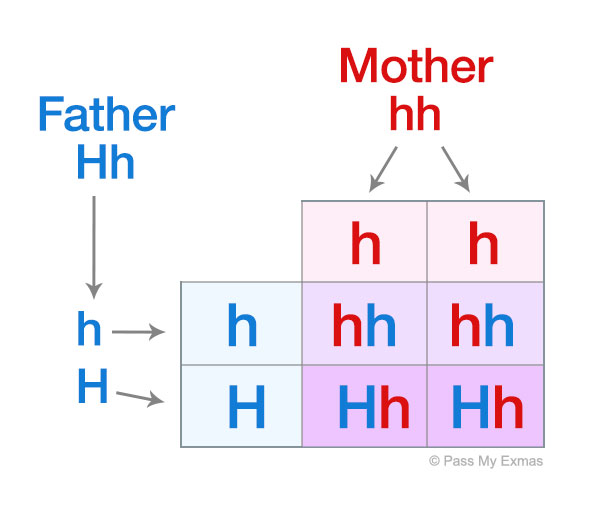Inherited diseases
Most inherited diseases are caused by recessive alleles. These are the mutant forms of normal alleles found in healthy people. A mutation is a change in the DNA base sequence, changing or preventing the production of the protein, which the gene normally codes for. Diseases caused by mutations are often referred to as inherited diseases. They are different from infectious diseases which are caused by microbes.
Huntington's disease
Huntington’s disease is an inherited condition that affects the nerve cells in the brain. It is caused by an autosomal mutation to a gene located on chromosome 4. It is caused by a dominant gene so only one allele is necessary to give the disease. It affects about 1 in 10,000 people.
Huntington’s disease gets progressively worst over time. It causes the deterioration of the brain cells and gradual loss of control of voluntary muscles by motor nerves. Huntington’s disease was originally called Huntington’s chorea (“chorea” is the Greek word for dancing) because of the uncontrollable shaking and dance like movements associated with the condition. However, the term “disease” is now used because the condition involves a lot more than uncontrollable movements. Associated to this condition to varying degrees is the loss of intellectual ability, slurring of speech, hallucinations, mood and personality swings and memory loss.
The gene responsible for Huntington’s disease is located on chromosome 4. It is responsible for the production of protein called Huntington. The function of this protein is currently unknown. In Huntington’s disease the mutated gene produces an abnormal form of the protein. Cells in parts of the brain are particularly sensitive to the effects of the abnormal Huntington protein and as a result function poorly and eventually die.
A particular difficulty with Huntington’s disease is that symptoms do not usually appear until middle age. By this time sufferers may have already passed on the disease to their children. Huntington’s disease is caused by a dominant gene and only one allele is necessary to give the disease. Thus, all heterogeneous people are sufferers. On average 50% of children will be sufferers if one parent is affected.
If we denote the recessive allele by “h” and the dominant allele by “H”, then a heterozygous person “Hh” will have the disease there can be no carriers.
For example, if a father is a sufferer then the table below shows there is a 1 in 2 chance of the child having Huntington’s disease.

There is currently no cure for cure for Huntington's disease and its progress cannot be reversed or slowed down. Medication can be used to manage some of the symptoms such as excessive movements. Speech and communication therapy is also given to help patients with day to day living. Predictive DNA testing is available to families with a high risk of the disease. This includes counselling the individual before and after testing.
Summary of Huntington's disease
The table below gives a summary of Huntington's disease.
Causes
- Huntington's disease is caused by a dominant mutation in a gene located on chromosome 4. The gene codes for the Huntington protein the function of which is currently unknown.
- The mutation results in the production of an abnormal form of the Huntington protein.
- This causes cells in parts of the brain to function poorly and eventually die.
Symptoms
- Behavioural changes – mood swings, difficulty concentrating and lack of emotions.
- Psychiatric problems – depression and personality changes.
- Movement problems – uncontrollable movements and loss of motor control. This also affects feeding as the mouth and throat muscles don't work properly.
- Communication and cognition – slurred speech, less responsive and loss of mental abilities
Treatment
- No current cure and treatment to reverse and slow down progress.
- Predictive DNA test is available to families with a high risk to the disease. In the UK children with a parent who suffers from the disease are offered the test at the age of 18.
